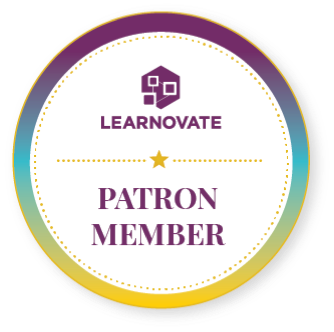Higher Education Curriculum Management System
Efficiencies Gained University Wide
Akari Curriculum Management Software provides a robust solution that will enable your institution to go beyond the digitisation of the paperwork.
Transform the Teaching and Learning experience digitising your entire curriculum using collaborative design, review, and approvals – allowing accurate publication, marketing and compliance.
Combining the management of curriculum agility and the cohesive proof points of constructive alignment, the Akari Curriculum Management solution helps you recruit and retain more learners – enhancing the applicant and student journeys.
Bond University
Professor Keitha Dunstan,
Provost at Bond University, Robina, QLD, Australia
The project converted what is unstructured, uncontrolled and turned it into managed and re-usable digital dataset. We've immediately discovered how to use the curriculum data to inform the strategy, as we can analyse the database, populated from all of our 1800 units in 250 courses down to the learning outcomes and assessment types.

Professor Chris Pilgrim,
Deputy Vice-Chancellor (Academic) – Interim at Swinburne University of Technology, Melbourne, VIC, Australia
Flexibility
Automation
Intelligence
Transform your curriculum into a digital asset
Streamline Processes and Access Insights
Support your organisation to design, control, and automate the behaviour of your curriculum management processes with a workflow tool that offers flexibility, configurability, and integrated intelligence.
From semester to semester all they have to do is deal with incremental changes that they have made to their subject… Now things are much more streamlined from their point of view.

Professor Keitha Dunstan,
Provost at Bond University
Empowering academics, enable student success and support institutional sustainability
Providing the right people with the request for timely action
Akari enables the teaching and learning activities and the assessments to be mapped to the Learning Outcomes.
Achieve curriculum agility through sophisticated tools to plan multiple recommended sequences based on different learner profiles.
Curriculum Agility
Learning Outcomes
Mapping
Governance

TURN INSTITUTIONAL GOVERNANCE INTO AN ASSET
Refine your governance processes in line with the evolution of your curriculum and cater to a diverse stakeholder community, each of whom need to engage in the design, development, and management of the curriculum in varying ways.
Gain enhanced efficiencies by integrating to your downstream solutions with a proven, mature, scalable, and robust dedicated API suite.
Support your organisation in the development and creation of publications associated with curriculum provision, from micro-credentials to research degrees, with the flexibility to support specific campaigns, geographies, locations, and intakes.
Evidence that the measures are applied to reduce the associated risk with contract cheating and determine the effectiveness of those measures on student misconduct.
- Process Efficiency
- Automatic Publication
- Maintain CMA Compliance
- Evidence the Evolution of Pedagogy
- Reduction of Organisational Risk
- Seamless Integrations
Assurance of Learning

DEVELOP AND DELIVER CONNECTED COHESIVE CURRICULUM
Design outcomes-based curriculum keeping the coherence between what learners are expected to achieve and how they are expected to demonstrate that achievement.
Provide Single Source of Curriculum Truth University Wide Manage versions across downstream systems with verified interoperability providing the appropriate version management for each student cohort.
Capture commentaries, notes, suggested actions and reactions to support the collaborative review of the curriculum.
Ensure co-existence between the Curriculum Management System and downstream Higher Education systems to achieve student centricity.
- Provide Single Source of Curriculum Truth University Wide
- Learning Outcome Validation
- Improve Delivery Quality Using Continuous Feedback Loop
- Identify Content Redundancies
- Reduce accreditation prep time
Recruitment

ACCURATE COMMUNICATION AND PUBLICATION
Evidence a clear curriculum path from application to completion.
Manage the totality of the learning experience from programme design, development validation, delivery, resource allocation, and publication.
Build an inclusive and agile academic culture centred on programme innovation with increased visibility on the curriculum and interfaculty collaboration in its development.
Enable greater engagement with learners from across the life long learner spectrum from under graduates to post graduate including continuous professional development.
Clearly articulate programme outlines incorporating learning outcomes learners are better able to see the potential career paths.
- Enhance and improve the applicant student experience
- Market accurate curriculum information to all stakeholders
- Micro credentials can pathway to post-grad programmes
- Programme job ready outcomes will attract more learners
Management

DRIVE OPERATIONAL EFFICIENCIES & PROVIDE DATA VISUALISATIONS
Drive efficiencies and effectiveness, uplifting productivity by providing the right people with the request for timely action.
Obtain insights on student performance and retention against the curriculum to optimise applicant conversions and student outcomes.
Assure the overall quality and standard irrespective of the type of partnership agreement in place.
Visualise and analyse the connected curriculum supporting a longitudinal view of the programme structure from a constructive alignment perspective.
Bring statutory compliance and best practice capability ahead of needs by using a commercially maintained and developed solution with ongoing roadmap and development plans.
- Manage partners effectively and efficiently
- Business Intelligence tool
- System integrations support management and leadership
- Operational management benefits
- Technologic benefits
Retention

SCAFFOLD LEARNER SUCCESS WITH PROACTIVE SUPPORT
Focus on retention and completion rates by having information that better matches students with courses before enrolment and identifying students at risk.
Capture the data required to market and deliver microunits and micro-courses with dedicated approval workflows.
Achieve curriculum agility through sophisticated tools to plan multiple recommended sequences based on different learner profiles.
Provide students with the short and long-term support they need to complete their studies successfully.
Present a powerful curriculum that works for multiple scenarios such as selection of primary and graduate degree programmes or in the context of micro-credentials and the future of life-long learning.
- Grow learner completion rates
- Learner centric with stackable micro-credentials
- Support learner choice with life long learning career relevant micro units
- De-risk the 'future of work' needs with curriculum agility
Finance

OPTIMISE CURRICULUM TO ACHIEVE CORE BUSINESS OBJECTIVES
Drive coherent data lead decisions on resources, course and programme planning, designing, modifying and retiring.
Ensure all new and existing investments are targeting the core business objectives such as student acquisition, staff productivity, quality improvement and resource efficiency.
- Data-lead investment decision-making
- Uncover revenue generation opportunities
What is Curriculum Management?
Curriculum Management is the development, maintenance, and modernisation of the curriculum through processes of ideation, reviews, and approvals. Curriculum is the key asset of an educational institution as it connects learning outcomes to assessments to course content, using what’s known as Constructive Alignment Theory.
Managing the curriculum usually involves several different departments and stakeholders, especially in universities and other higher education institutions.
What is a curriculum management system?
A curriculum management system, or CMS, is a software solution that helps educational institutions in the process of creating, managing and optimizing their curriculum.
It will usually include features such as course mapping tools to ensure each course meets institutional standards, analysis tools to identify student performance trends and gaps in the curriculum, degree audits to track students’ progress along their degree course, and automated approval processes to ensure compliance.
It can also be integrated with other software solutions such as student information systems (SIS), learning management systems (LMS) or HR systems to provide a holistic view of the curriculum and better inform decision-making.
What are the benefits of using a curriculum management system?
The benefits of a curriculum management system for higher education institutions include:
- Automated and streamlined processes – With improved data tracking and audit capabilities, educational institutions can more effectively identify areas for improvement in their curriculum design process.
- Improved student engagement – With access to resources such as lecture recordings or assessments, students can review course material at their own pace and gain a better understanding of the topics they are studying.
- Increased flexibility – A curriculum management system enables faculty members to make changes quickly, allowing them to respond quicker to changes in course content or student learning needs.
- Improved collaboration – With access to collaboration tools, faculty members can easily communicate with one another and coordinate their efforts when making changes to the curriculum.
What are the benefits for faculty members of having a curriculum management system?
For faculty members, a curriculum management system provides several key advantages. These include:
- Improved communication – With access to collaboration tools, faculty members can easily communicate with one another and coordinate their efforts when making changes to the curriculum.
- Increased efficiency – Faculty members can streamline processes such as course planning, grading, and data entry by utilizing automated features within the system.
- An easier way to track student progress and identify areas where they may need additional help or support.
- Increased transparency into the curriculum, allowing faculty to easily view course objectives, learning outcomes and assessments.
What are the benefits of using a curriculum management system for students?
Using a curriculum management system can provide students with several benefits, such as:
- More clarity on what courses are available and which ones they need to take to complete their degree.
- Easier access to relevant information, including prerequisites, syllabuses, and learning objectives.
- Improved access to resources – Students can access course materials, such as lecture recordings or assessments, from any location.
- Increased visibility into the learning outcomes and assessments associated with each course.
- Ability to plan future course selections and plan academic pathways more easily.
- Enhanced engagement – With real-time feedback and data analysis tools, students can more easily track their progress and understand areas for improvement.
- Increased transparency into their own educational process, allowing students to track their progress and identify areas of improvement.
What are the features of a curriculum management system for higher education?
The features of a curriculum management system for higher education typically include:
- Automated approval process: allows course changes to be quickly reviewed and approved.
- Course mapping tools: helps ensure each course meets the standard set by the educational institution.
- Analysis tools: identifies student performance trends and gaps in the curriculum.
- Degree audit: tracks students’ progress toward graduation or other goals.
- Collaboration tools: facilitates communication between departments and faculty members when making changes to the curriculum.
- Resource features: provides students with quick and easy access to resources associated with each course, such as textbooks and other materials.
How do I choose a curriculum management system?
When choosing a curriculum management system, it is important to consider the following factors:
- Scalability: Ensure that the system can accommodate the needs of your institution now and in the future.
- Flexibility: Make sure that the system is able to adapt to changes quickly and easily.
- Integration capabilities: Look for systems that offer integrations with other systems such as student information or enterprise resource planning.
- Security: Ensure the system is secure and compliant with relevant data privacy regulations.
- Support: Look for software providers who offer a reliable support team to assist in any technical issues.
- Cost: Consider both the setup cost and the ongoing maintenance.
What integrations are possible with a curriculum management system?
Many CMS (Curriculum Management Software) solutions offer a range of integration options to help educational institutions optimize their curriculum design process. These include:
- Integrating with Learning Management Systems (LMS), which allows faculty members to easily access student performance data and tailor their teaching methods accordingly.
- Integrating with lecture capture systems, which enables instructors to record lectures for later review.
- Integrating with assessment tools, such as quizzes and exams, which allow educators to efficiently evaluate student performance.
- Integrating with communication systems, such as chat applications or email services, which allow faculty members to answer questions or provide feedback to students easily.
- Integrating with analytics tools to gain valuable insights into student performance trends and identify areas for improvement.
Curriculum management systems offer a variety of benefits and integration options to help educational institutions optimize their teaching process.
These tools allow faculty members to easily access and evaluate student performance data, design courses that meet the needs of their students, and collaborate with other departments when making changes to the curriculum.
This enables higher education institutions to provide a more effective learning experience for their students.
How do I implement a curriculum management system?
Implementing a curriculum management system involves the following steps:
- Assessment: Evaluate your institution’s needs and determine which features you want to include in your curriculum.
- Design: Develop a plan for how the new system will be implemented, including processes for data entry, audit tracking, and collaboration tools.
- Testing: Test the system in a controlled environment to ensure that it functions as expected.
- Training: Train staff on how to use the new system and provide them with any support materials they may need.
- Launch: Launch the new system and monitor its performance over time.
By following these steps, you can ensure that your curriculum management system is implemented successfully.
How does a curriculum management system improve student success?
A curriculum management system can improve student success by providing students with access to resources such as lecture recordings or assessments, giving them the freedom to study at their own pace.
With real-time feedback and data analysis tools, students can more easily track their progress and understand areas for improvement.
Finally, a curriculum management system enables faculty members to make changes quickly, allowing them to respond quickly to changes in course content or student learning needs. This ensures that students are presented with up-to-date information and materials related to their studies, increasing the likelihood of success.
How can curriculum management systems help with the alignment of learning outcomes?
Curriculum management systems can help with the alignment of learning outcomes by providing a comprehensive view of the curriculum and its components.
By mapping these components to specific learning objectives, faculty members can ensure that the appropriate course materials are being presented to students in order to meet their learning needs.
Automated features such as data tracking and audit capabilities provide an easy way to identify areas for improvement in the curriculum design process.
A curriculum management system provides numerous advantages to higher education institutions, students and faculty members alike.
By providing access to resources, enhanced communication capabilities and streamlined processes, educational institutions can improve student success while ensuring the alignment of learning objectives.
How does constructive alignment theory relate to curriculum management?
Constructive alignment theory is a widely used framework for curriculum design and management.
The theory, developed by John Biggs, states that learning activities should be designed to actively engage students in order to achieve specific learning outcomes.
In this context, curriculum management systems provide tools that allow faculty members to design courses according to the principles of constructive alignment.
By mapping learning objectives to course materials, faculty members can ensure that the content is meeting the stated goals of the curriculum.
Many systems provide automated features such as data tracking and audit capabilities which enable faculty members to identify areas for improvement in the curriculum design process.
A well-designed curriculum management system can help institutions ensure that their courses are aligned with the principles of constructive alignment.
In this way, universities can ensure that students receive quality instruction and achieve the desired learning outcomes.
How is curriculum structured?
The structure of a curriculum typically involves four main elements: learning objectives, assessments, course content and syllabus.
- Learning objectives should provide a clear description of the skills or knowledge that students are expected to gain from taking a course.
- Assessments allow educational institutions to measure student learning outcomes and gauge the effectiveness of their teaching methods.
- Course content provides an outline for what is covered in each lesson and connects back to the learning objectives.
- The syllabus should provide a comprehensive course overview, including information such as class expectations, grading policies and contact details for faculty members.

